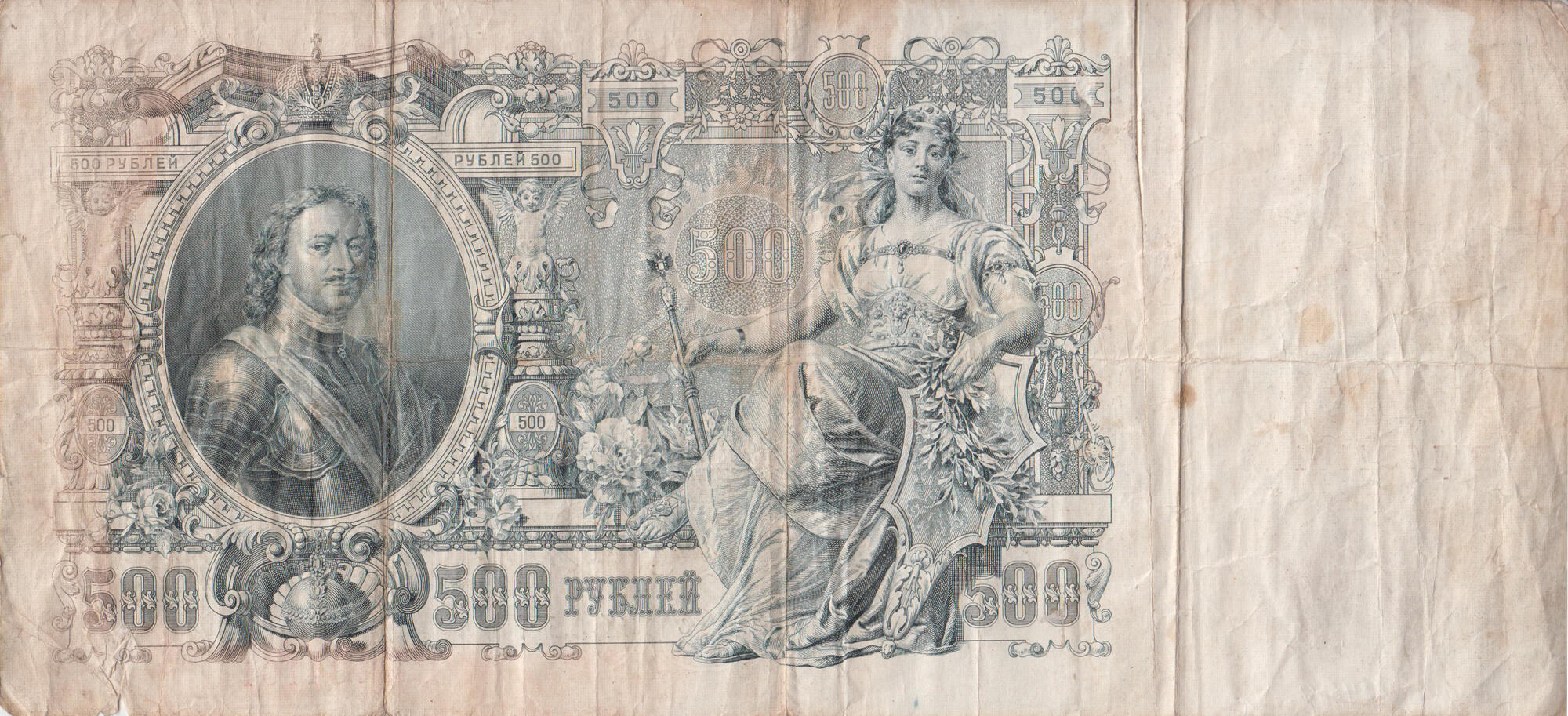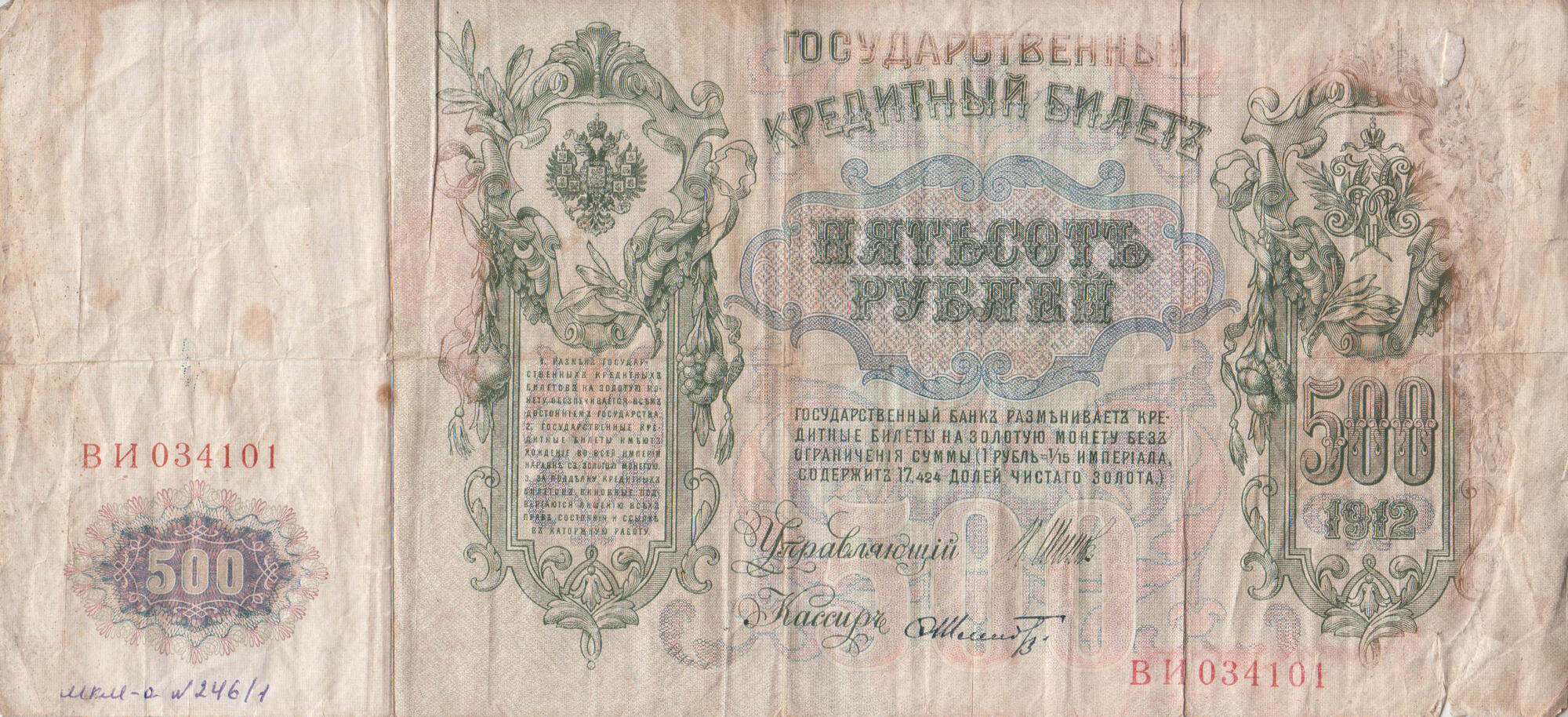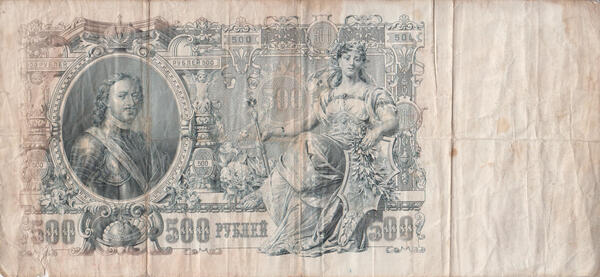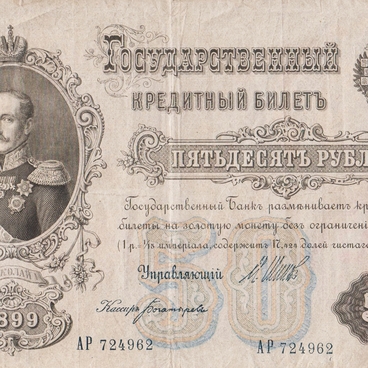The design of the 500-ruble banknote is considered one of the most beautiful in the history of Russian paper money. It was first issued in 1898, with an additional issue in 1912. Before the Revolution the banknote was issued in small quantities, as its face value was quite high. Most of the population of the Russian Empire could earn such a sum only in a few years. Since one side of the banknote had an image of Emperor Peter the Great on it, the banknote was popularly nicknamed “petenka” or “petrusha”.
The design of the banknote was developed by the famous graphic artist Rihards Germanovich Zariņš. In 1912 he became director of the State Paper Procurement Expedition, which designed and produced state banknotes. Like many other banknotes it survived the Russian Empire and continued to be printed after the Revolution. All subsequent series, however, had the date “1912” on them. This banknote was issued during the Soviet era, as indicated by the ВИ series number.
Peter the Great’s image on the empire’s largest banknote is a perfectly logical step. Under him, the empire was proclaimed and Russia’s influence on European affairs increased significantly. He started building the Russian fleet and organized a regular army, which helped him win a long and difficult war against Sweden, enabling his country to gain a foothold on the Baltic Sea. During his rule cultural contacts with Europe increased dramatically. European standards of social and domestic behavior were encouraged amongst the higher classes, leading to a breakdown of the old ways of thinking concerning the position of various classes in the country. Under Peter, a strong system of diplomatic contacts with Europe was established, further cementing Russia’s ties with the West. His extensive program of administrative, economic and political reforms had a profound effect on the development of the state. The results of many of his reforms were felt very strongly in the early 20th century. Much of what he started was later developed and continued by successive rulers of the dynasty, while certain changes were made. But the figure of Peter retained important ideological significance in the empire — both in terms of the ways of developing the state and in terms of the ruling dynasty.
The design of the banknote was developed by the famous graphic artist Rihards Germanovich Zariņš. In 1912 he became director of the State Paper Procurement Expedition, which designed and produced state banknotes. Like many other banknotes it survived the Russian Empire and continued to be printed after the Revolution. All subsequent series, however, had the date “1912” on them. This banknote was issued during the Soviet era, as indicated by the ВИ series number.
Peter the Great’s image on the empire’s largest banknote is a perfectly logical step. Under him, the empire was proclaimed and Russia’s influence on European affairs increased significantly. He started building the Russian fleet and organized a regular army, which helped him win a long and difficult war against Sweden, enabling his country to gain a foothold on the Baltic Sea. During his rule cultural contacts with Europe increased dramatically. European standards of social and domestic behavior were encouraged amongst the higher classes, leading to a breakdown of the old ways of thinking concerning the position of various classes in the country. Under Peter, a strong system of diplomatic contacts with Europe was established, further cementing Russia’s ties with the West. His extensive program of administrative, economic and political reforms had a profound effect on the development of the state. The results of many of his reforms were felt very strongly in the early 20th century. Much of what he started was later developed and continued by successive rulers of the dynasty, while certain changes were made. But the figure of Peter retained important ideological significance in the empire — both in terms of the ways of developing the state and in terms of the ruling dynasty.




